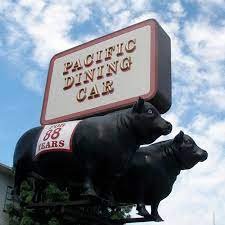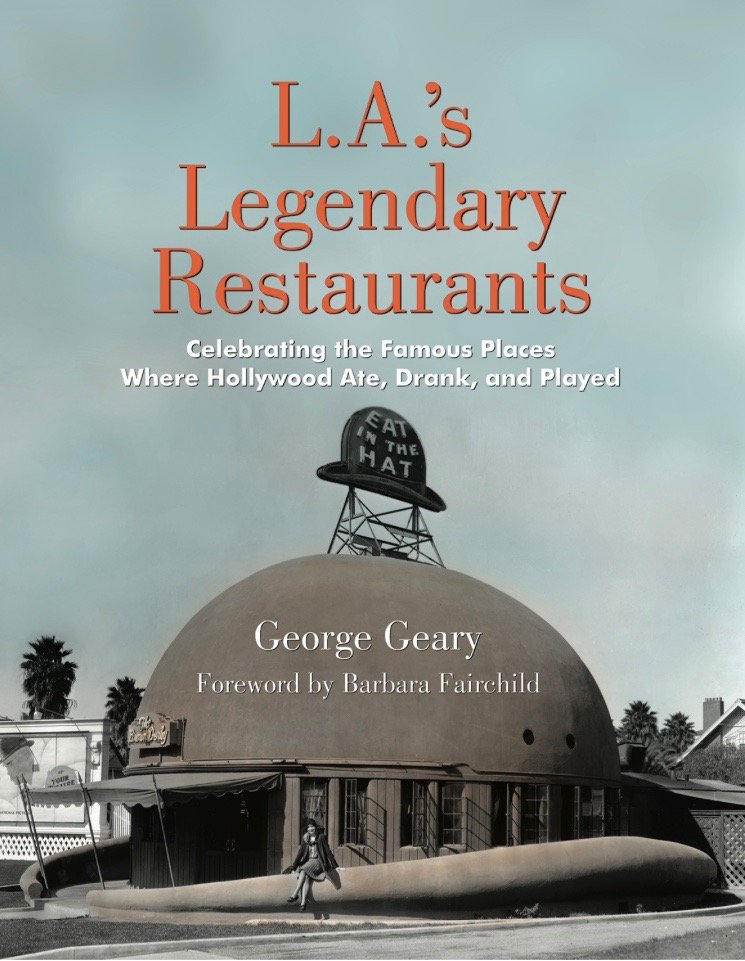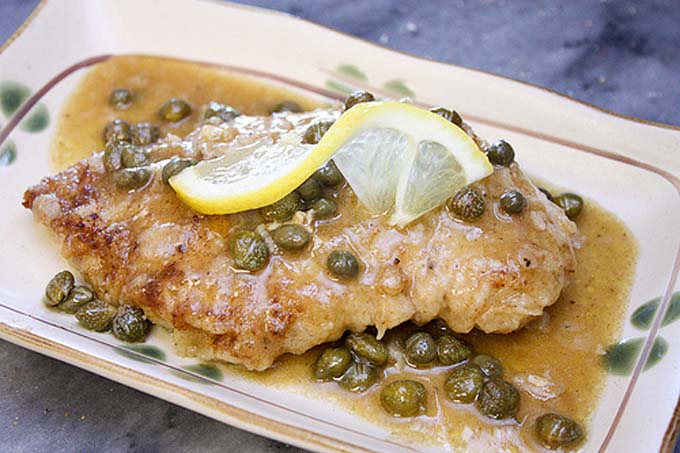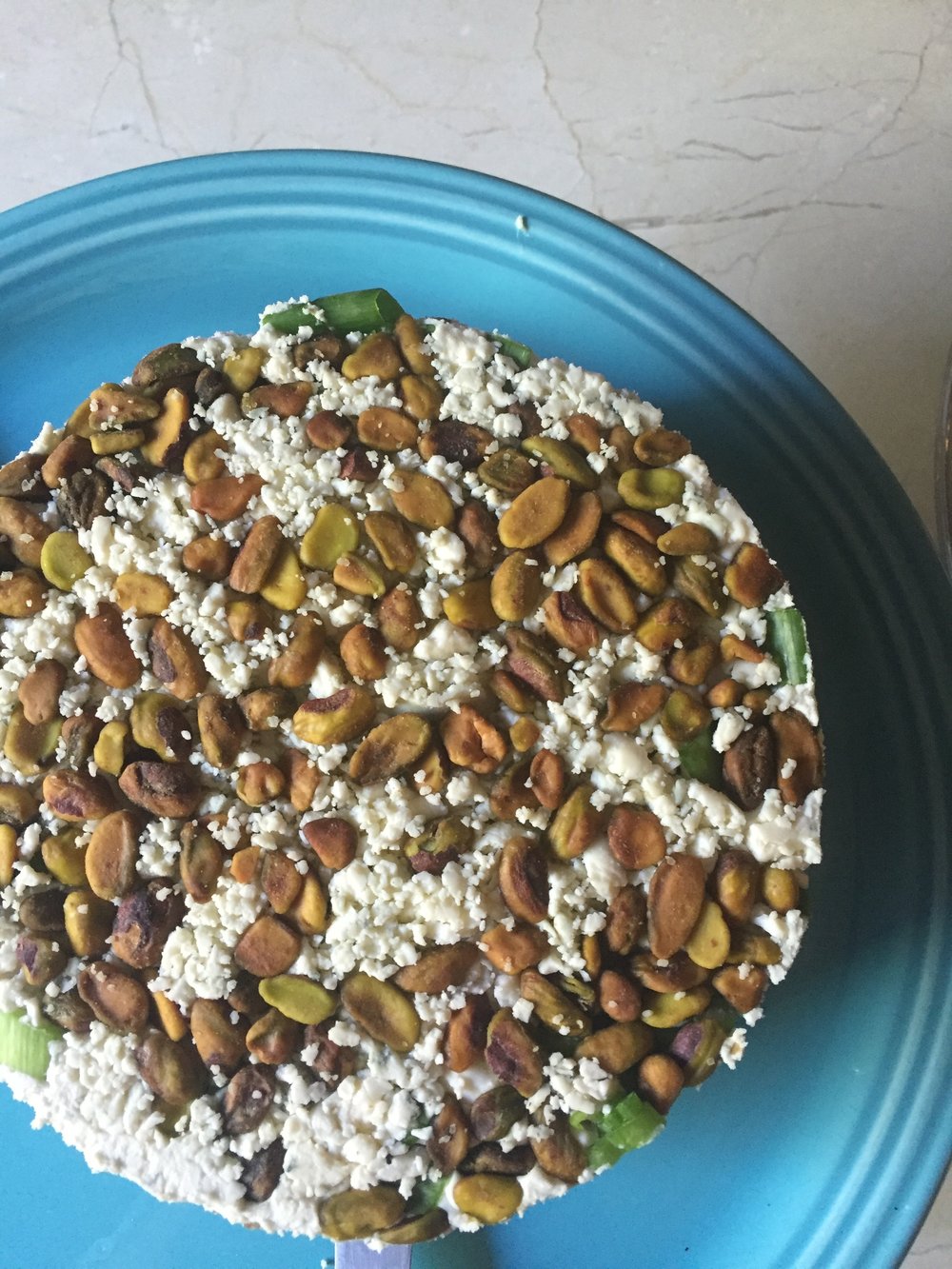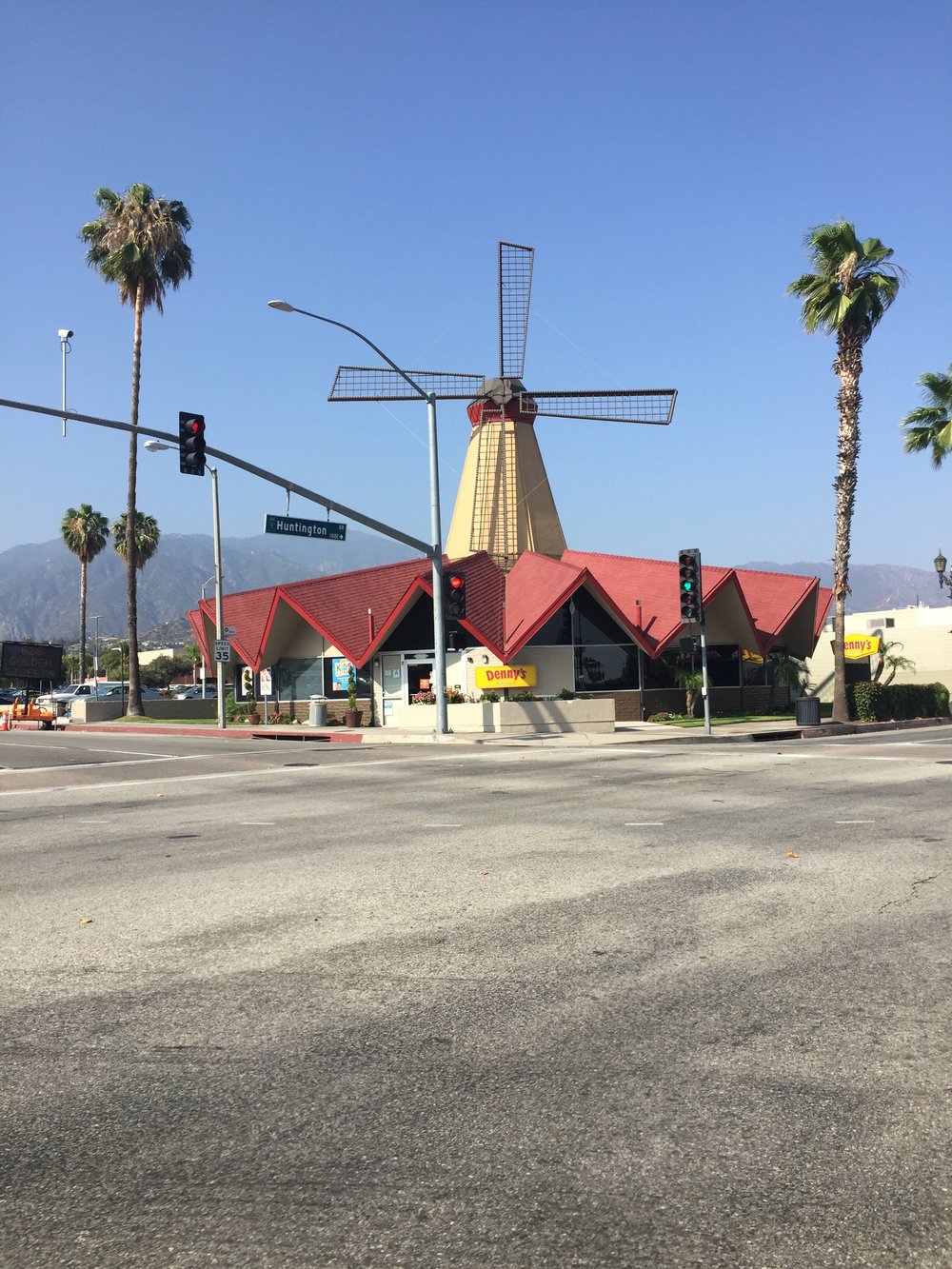Pacific Dining Car in 2009
The Pacific Dining Car opened in 1921, one of a handful of restaurants in Los Angeles that was open 24 hours a day. In 2020, a year short of the 100th anniversary, the family closed the final location (the Santa Monica location had previously closed). Neil and I spent Valentine's evening a month before they closed. It was said they would reopen. Then, the family held an auction and sold everything off, even those two black bulls that held up the sign. Today, I woke up reading the building had been destroyed by fire. The building sat empty, boarded up for four years. Gone. Below is the chapter I wrote about the Pacific Dining Car in my LA’s Landmark Restaurants book.
August 3rd, 2024, at a little after midnight, fire gutted the Pacific Dining Car.
1921 Pacific Dining Car
1921-2020; Building destroyed by fire August 2nd, 2024
Pacific Dining Car
1310 W. 6th Street
Los Angeles, CA 90017
☏213-483-6000
Founders: Fred and Grace “Lovey” Cook
SideBar: Ownership
1921-1947 Fred Cook & Grace Cook
1947--1970: Virginia (Cook) & Wes Idol
1970-1975: Virginia Idol (Cook)
1975-2019: Westly Idol II (Grandson of the Founder)
2019-2020: Westly Idol III (Great Grandson of the Founder)
Fred and Grace Cook came from New York City out west, landing in Los Angeles. At one time, Fred was a protégé of Metropolitan Oprah star Enrico Caruso, who decided that the future was in hospitality instead of the opera stage.
The dining car's first two years of operation were in a lot in the Westlake District on 7th and Westlake. The land was sold, so Fred and Grace Cook looked for another location to place their redesigned dining car. Finding a parcel of land 3/4th a mile closer to downtown was heaven-sent. The land was directly across from the newly built St. Regis Hotel on 6th.
Using the modified railroad dining car as the base of the building, over the years, the car expanded with additional rooms. The lot itself had a white picket fence surrounding it. The inside rooms were outfitted with period items such as old suitcases, chairs, and booths you would see during the time. A few wingback chairs enclosed the area for two to dine with privacy.
The dining car had six menus throughout the day: Breakfast, Lunch, Dinner, Tea Menu, Late-Night Menu, and dessert menu. The Pacific Dining Car was known for its aged beef steaks cooked over live mesquite and then a broiler. All of the side dishes came on a cart.
Before the Depression, Fred built a curing box to age and hand-handle their beef at the restaurant. This meant he had complete control of the meat and what he served. It helped with profits during the Depression and kept the doors open.
The Pacific Dining Car is one of only two restaurants in the downtown area that serve food 24/7. A few of the Hollywood Elite would dine there. Like most steak restaurants, it was a favorite of Gangster Mickey Cohen. Bankers, Lawyers, stockbrokers, newspaper reporters, athletes, and visitors of the St. Regis Hotel next store.
Virginia Cook married Westly Idol, an electrical contractor. Her parents needed some temporary help in the kitchen, so they helped. Wes never thought he would go into the business. World War II started, and Wes joined the army and became a mess officer. The beef was difficult to procure, so they changed the menu to serve chicken.
Wes returned home from the service. In 1948, Fred passed away, leaving the restaurant responsibilities to his widow. She asked her daughter and son-in-law to take over the daily responsibilities.
In 1970, Wes Idol and Wes Jr. remodeled the restaurant with fresh paint and carpeting and installed air conditioning and a temperature-controlled wine storage room. Wes Jr. also started traveling to European countries known for their wines, learning as much as he could so we could introduce fine wines to the diners.
In Westly Idol II’s obituary, they stated that instead of flowers, treat some friends to a good meal and a nice bottle of wine. Five years later, Wes Jr. purchased the restaurant from his mother after his father died. He updated the menu to offer a wider variety of options.
When you first walk into the restaurant, you notice two things: a little bell rings to announce your arrival, and you will not hear any music, radio, or television in the dining room or bar. This is to create a natural and quiet ambiance in the Dining cars and to let social interaction drive the experience.
In 1979, they opened for 24 hours. Prior to this, they had closed at 2:00 a.m. and had reopened at 6 a.m. Wes wondered what four more hours were. From 10 pm to 6 am, the late-night menu was about half the price of the daytime one.
The Los Angeles Music Center and sports events play havoc on parking and driving close to those venues. The PDC offered shuttle buses to those who parked in their lot and dined.
In the 2001 film Training Day, Actors Denzel Washington and Ethan Hawke filmed portions of the movie in the dining room. This led Westly Idol II to rename the baseball steak on its lunch menu the “Training Day” steak.
The Spring of 2020 was devastating to the restaurant industry. The COVID-19 pandemic and the closures of in-person dining closed many restaurants. In mid-June, the Santa Monica Dining Car on Wilshire announced through its Instagram page that it was auctioning off all its equipment and furnishings. The 30-year-old location held the auction online, and everything was gone in three days.
Less than 5 months later, Wes Idol announced that the original 99-year-old location would be auctioning everything so they could focus on mail orders of beef and rubs. The auction was completely online with everything to the last booth sold. I drove past recently, and the entire building looks abandoned and boarded up. I am so sorry it did not hit the century mark if they had only waited a few more months. Reports are that they are just “paused” for the time being, but time will tell
Pacific Dining Car in 1930
